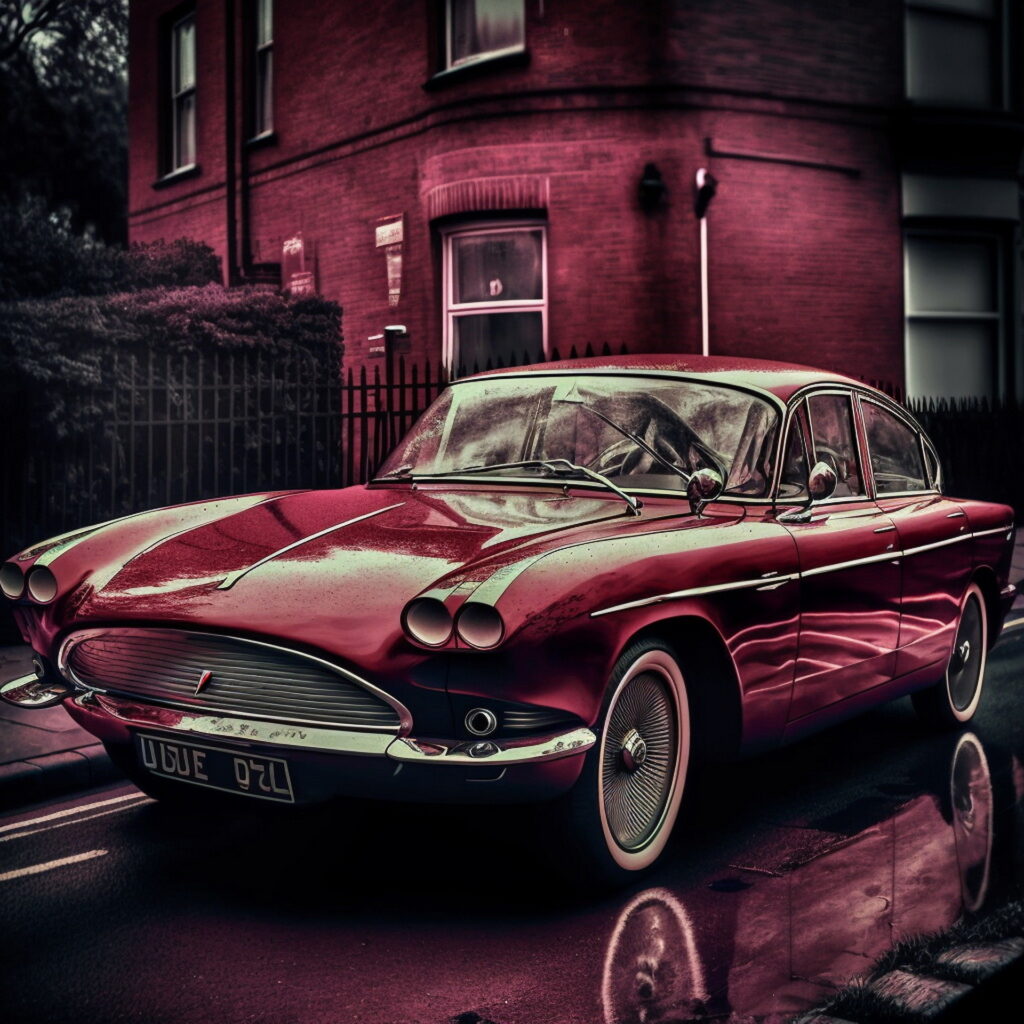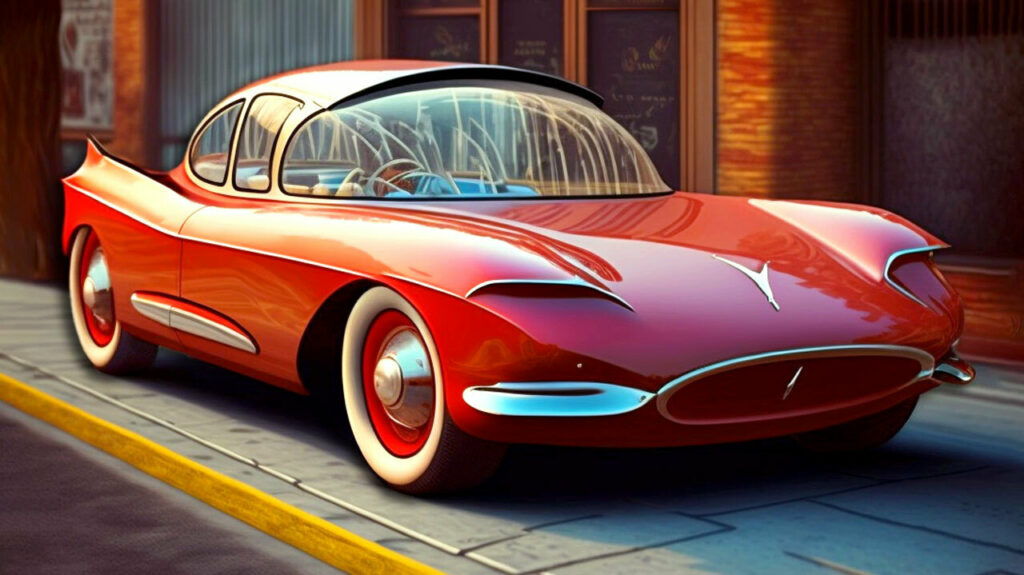With all due respect to Tesla, the electric-vehicle startup is noted for its blind optimism and exuberance. These (including their dark consequences) are qualities that defined American industry in the 1950s and ’60s.
And that made us wonder; what would a Tesla Model S have looked like if it had been designed in the era that believed the future was so bright that everyone would need sunglasses? To find out, we asked and fed an AI generator with information to design the electric vehicle as if it had been made in the ’50s and the ’60s.
The results were a little surprising to me, but they do work quite well. Starting with what I believe to be the design that looks older, the red, jet-age-and-chromium design of this sleek Model S looks like something straight off the concept car turntable of a 1950s auto show.
Read: Tesla Model X Off-Roader Looks Dakar Ready
Somewhere between the flying saucer spaciness of the Citroën DS and the big-winged designs indicative of GM’s thinking at the time, this ’50s Model S looks pretty good. The wings remind me of a Cadillac, but there’s something of the C1 Corvette’s spirit in the design, too, which makes sense given the performance of the modern car.
The bubbly canopy, meanwhile, does a pretty good job of combining the design of the times with the distinctive window lines of a modern Tesla. And while the renderings seem to incorporate the automaker’s lack of grille, they’re also seemingly bereft of headlights, which feels like a problem.

Skipping forward a few years, the AI machine created something that looks like it belongs in an early ’60s showroom. Unable to avoid the grille here, this—let’s call it “second-generation”—Model S borrows some cues from Aston Martin, while also incorporating some Maserati 5000 GT lines, and there’s something almost Ford Anglia-esque about the roofline.
The doubled headlights do share something in common, again, with later C1 Corvettes, though their small size makes them feel a little anachronistic. Additionally, the massive wire rims are another hint that these images combine classic and modern designs in a manner that isn’t always perfect.
Although there’s something a little uncanny about both of these designs, they do kind of work. While it’s unlikely that an electric car could have taken on the automotive industry in the late ’50s and early ’60s the way Tesla did in the 2010s, it’s still fun to think what it might have looked like if it had tried.


















